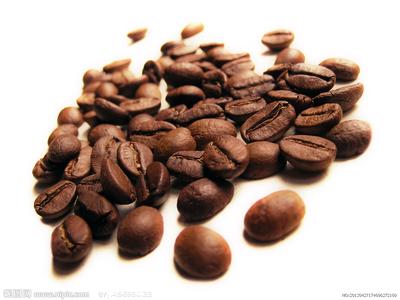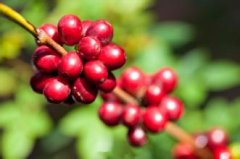Growth environment, characteristics and development status of Robusta coffee beans

The output of Robusta species accounts for 25% of coffee bean production, which accounts for 25% of coffee bean production. Its main producing country is Indonesia (one of its coffee beans is a kind of coffee bean processed by washing method, which is a hybrid between Robusta and Arabica. It is the only coffee bean on the Chinese market that can be used as a single drink), Vietnam, Africa, (Ivory Coast, Nigeria, Angola as the center of the West African countries), Vietnam has been more committed to coffee production in recent years, and included it in national policy (Vietnam also produces a small number of Arabica coffee beans) Robsta coffee tree is a kind of tree between shrubs and tall trees with longer leaves. The color is bright green, the tree can be up to 10 meters high, but the root is very light, the fruit is slightly rounder and smaller than Arabica coffee, the bean body is flat and round, and the pit in the middle is straight.
Robusta has a unique aroma (known as "Rob flavor", some people mainly because of musty smell) and bitterness. If 2% of the coffee is mixed with other coffee, the whole cup of coffee will become Rob flavor (therefore, Robusta coffee beans can not be drunk as individual coffee beans).
Its flavor is so bright and strong, but if you want to taste it directly, you have to be prepared.
In general, robusta coffee is used in instant coffee (which extracts about twice as much liquid as Arabica), canned coffee, liquid coffee and other industrial coffees.
Its caffeine content is much higher than that of Arabica species, which is about 3.2%. Arabica coffee beans grow at colder high elevations in the tropics, which is not suitable for Arabica species.
Robstado grows in the lowlands at 200-600m above sea level and likes warm climates. the temperature is 24-29 ℃, and the requirement for rainfall is not high. However, the variety depends on insects or wind to pollinate, so it takes 11 months from pollination to fruit, which is longer than the Arabica species.
In the general coffee market, many people like to compare robusta and Arabica coffee beans, which is incorrect.
In fact, the Robusta species was originally a mutant of the Congo species (scientific name: Coffee Canephora), and it should be compared with the Alabica species.
Today, however, the Robusta species is commonly used, and it is not known that it is actually a variant of the Congo species (scientific name Coffee Robusta Linden), one of the most important coffee varieties in the world. The leaf rust resistant varieties found in Congo in Africa have stronger disease resistance than Arabica.
Important Notice :
前街咖啡 FrontStreet Coffee has moved to new addredd:
FrontStreet Coffee Address: 315,Donghua East Road,GuangZhou
Tel:020 38364473
- Prev

Differences in appearance, flavor, market price and use between arabica and robusta
"Arabica" coffee has a variety and a wide range of potential flavors. Arabica coffee produced in different regions, at different altitudes and in different climates usually has its own characteristics and can show very different personality flavors. Arabica coffee smells like grass when it is not roasted, and after proper roasting, it shows "fruity"(middle).
- Next

Recipe and technique of Indian Coffee Fancy Coffee making course
Indian coffee is a relatively pure fancy coffee, so it has a higher demand for black coffee on the base. It is best to use no more than seven days of deep-roasted fresh coffee beans to extract.
Related
- Detailed explanation of Jadeite planting Land in Panamanian Jadeite Manor introduction to the grading system of Jadeite competitive bidding, Red bid, Green bid and Rose Summer
- Story of Coffee planting in Brenka region of Costa Rica Stonehenge Manor anaerobic heavy honey treatment of flavor mouth
- What's on the barrel of Blue Mountain Coffee beans?
- Can American coffee also pull flowers? How to use hot American style to pull out a good-looking pattern?
- Can you make a cold extract with coffee beans? What is the right proportion for cold-extracted coffee formula?
- Indonesian PWN Gold Mandrine Coffee Origin Features Flavor How to Chong? Mandolin coffee is American.
- A brief introduction to the flavor characteristics of Brazilian yellow bourbon coffee beans
- What is the effect of different water quality on the flavor of cold-extracted coffee? What kind of water is best for brewing coffee?
- Why do you think of Rose Summer whenever you mention Panamanian coffee?
- Introduction to the characteristics of authentic blue mountain coffee bean producing areas? What is the CIB Coffee Authority in Jamaica?

